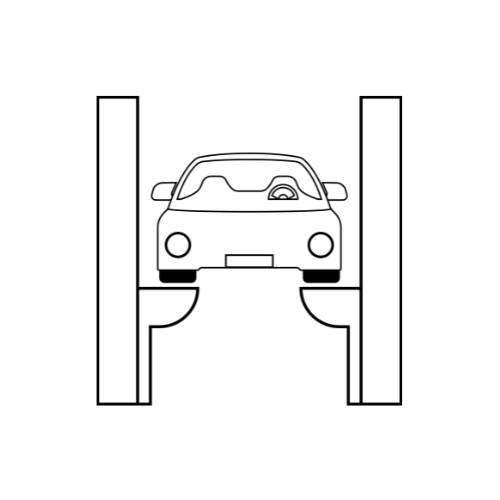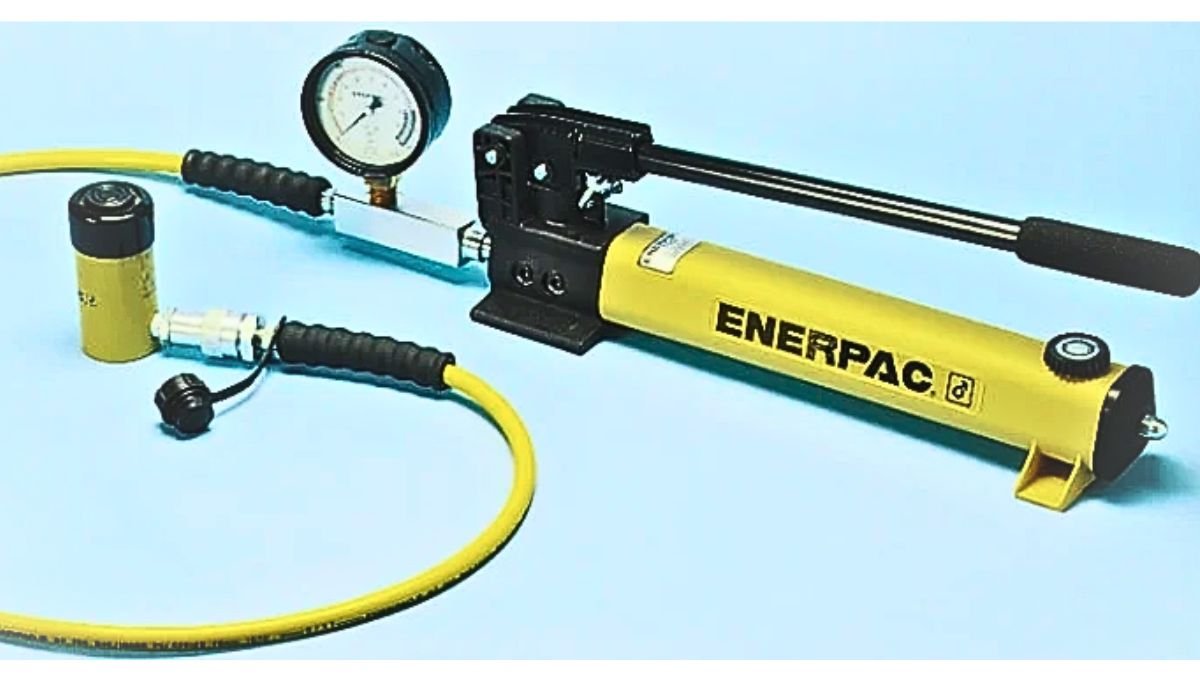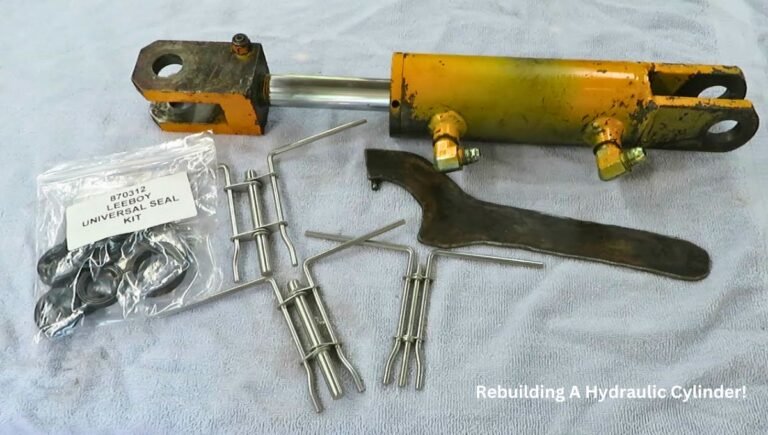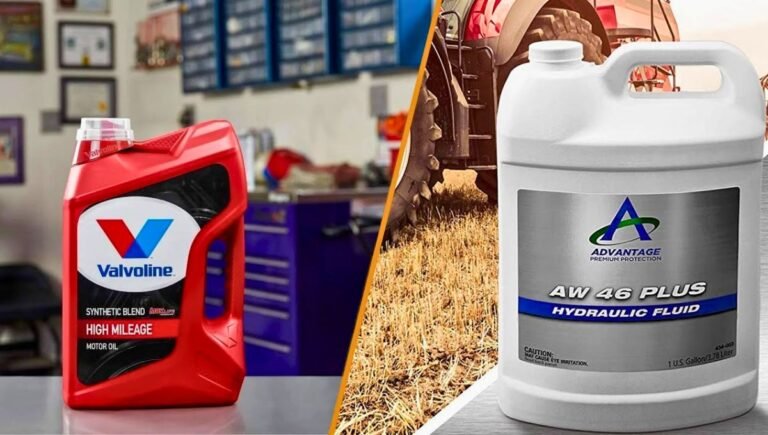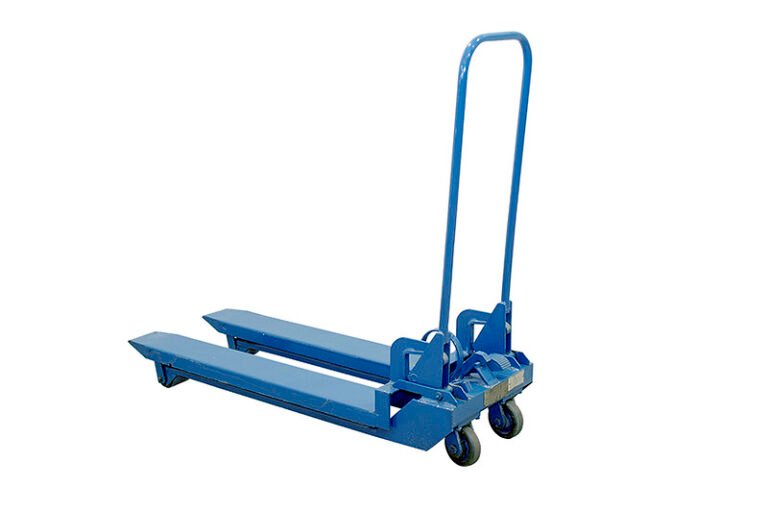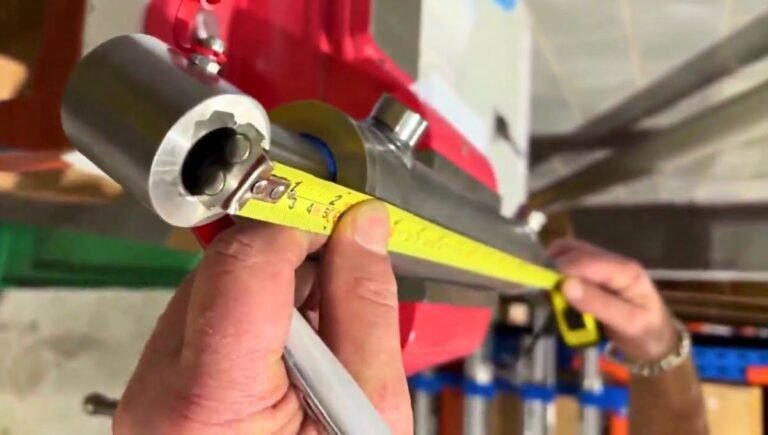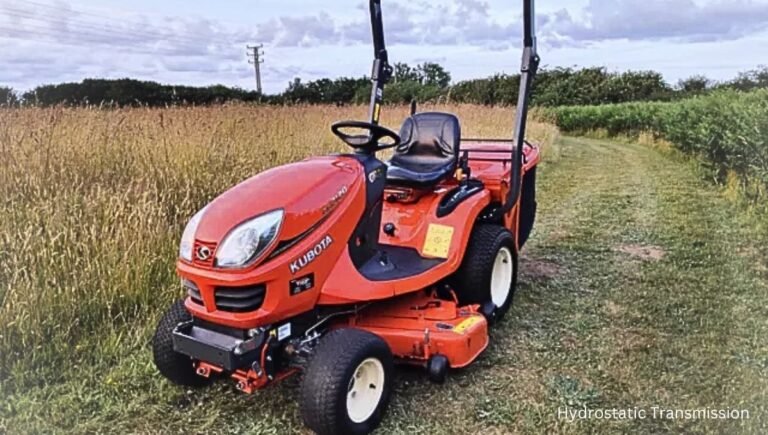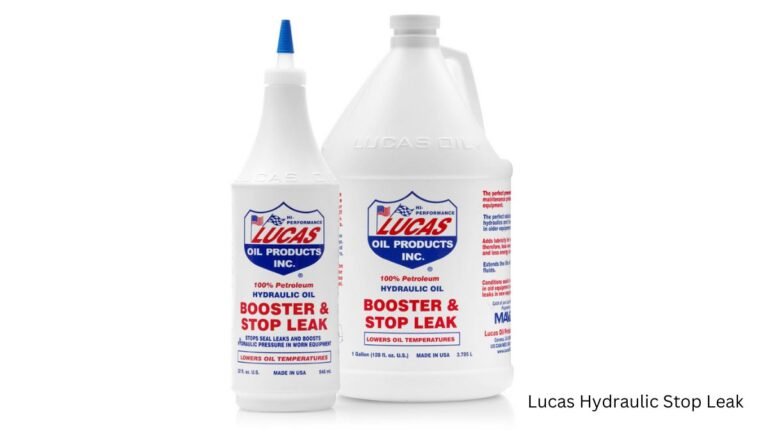How to Get Air Out of a Hydraulic System? Quick Fixes
To get air out of a hydraulic system, locate the bleed valve and release the trapped air by opening it. Ensure the hydraulic fluid level is adequate.
Air in a hydraulic system can cause erratic operation and reduce efficiency. Bleeding the system is crucial for maintaining optimal performance. Start by finding the bleed valve, usually positioned at the highest point of the system. Slowly open the valve to let trapped air escape.
Monitor the hydraulic fluid level and top it off if necessary. This simple maintenance step ensures smooth and reliable hydraulic operation. Always follow the manufacturer’s guidelines for the best results. Proper bleeding extends the lifespan of your hydraulic system and prevents costly repairs.
Introduction To Hydraulic Systems And Air Contamination
Hydraulic systems are vital in many machines and tools. They use fluid to transfer power. Keeping the system free of air is crucial. Air contamination can cause problems. Understanding how air enters and affects these systems is important.
The Role Of Hydraulics
Hydraulics play a key role in machinery. They help in lifting, moving, and controlling heavy loads. They work by using fluid pressure. This fluid is often oil. It flows through the system, creating force.
Hydraulic systems are found in various applications. These include construction equipment, automotive brakes, and industrial machinery. They are essential for efficient and powerful operation.
How Air Affects Hydraulic Systems
Air in hydraulic systems is a problem. It affects performance and efficiency. Air bubbles can compress. This reduces the system’s ability to move fluid. As a result, the system may become sluggish.
Air contamination can also cause noise and vibrations. These can lead to wear and tear. Over time, this may cause damage to components. It is important to remove air from the system to ensure smooth operation.
To prevent air contamination, regular maintenance is necessary. Bleeding the system helps remove trapped air. Using high-quality seals and proper installation techniques can also reduce the risk of air entering the system.
Symptoms Of Air In Your Hydraulic System
Air in a hydraulic system can cause several issues. Identifying these symptoms early can prevent major damage. Here are some common signs that air might be in your hydraulic system.
Unusual Noises
One clear symptom is unusual noises. These noises often sound like knocking or banging. You might also hear a hissing sound. These noises come from air bubbles moving through the system.
Erratic System Behavior
Another sign is erratic system behavior. The system may jerk or shudder during operation. This happens because air bubbles disrupt the fluid flow. You might also notice inconsistent speed or movement in the machinery.
Decreased System Efficiency
Decreased system efficiency is another symptom. The system may struggle to lift or move loads. You might see a drop in overall performance. The system may require more power to function.
Common Causes Of Air Entering Hydraulic Systems
Air in hydraulic systems can reduce efficiency and cause damage. Understanding common causes of air entering the system helps in preventing it. This section discusses the main reasons why air gets into hydraulic systems.
Leaks In The System
Leaks are a primary cause of air entering hydraulic systems. Small cracks or loose fittings can let air in. Regularly inspect hoses, seals, and connections. Use a soapy water solution to find leaks. Leaks not only allow air in but also let fluid out. This can lead to a drop in performance.
Improper Fluid Levels
Maintaining proper fluid levels is crucial for hydraulic systems. Low fluid levels can cause air to enter. Always check the fluid reservoir. Make sure it’s filled to the recommended level. Using the wrong type of fluid can also cause issues. Always follow the manufacturer’s guidelines for fluid type and level.
Faulty Component Installation
Incorrectly installed components can create air pockets. Ensure all components are installed correctly. Tighten fittings to the specified torque. Double-check connections for any signs of looseness. An improperly installed pump or valve can introduce air into the system. Always use the correct tools and follow installation instructions carefully.
Preventive Measures Against Air Contamination
Preventing air from entering a hydraulic system is crucial. Air contamination can cause system inefficiency and damage. Proper preventive measures ensure smooth operation and longevity of the hydraulic system.
Regular Maintenance Checks
Conduct regular maintenance checks to spot and fix issues early. This involves inspecting seals, hoses, and connections. Look for signs of wear, leaks, or damage. Replace any compromised parts immediately. Regular checks help in identifying potential air entry points.
- Inspect seals, hoses, and connections
- Look for signs of wear or leaks
- Replace compromised parts immediately
Correct Fluid Levels Maintenance
Maintaining correct fluid levels is essential. Low fluid levels can introduce air into the system. Check fluid levels regularly and top up as needed. Always use the recommended hydraulic fluid for your system.
| Task | Frequency |
|---|---|
| Check fluid levels | Weekly |
| Top up fluid | As needed |
Proper System Assembly And Repair
Ensure proper system assembly and repair to prevent air entry. Use the correct tools and follow manufacturer guidelines. Tighten all connections properly to avoid leaks. During repairs, ensure that no air is trapped in the system.
- Use correct tools
- Follow manufacturer guidelines
- Tighten connections properly
- Ensure no air is trapped during repairs
Preventing air contamination in hydraulic systems is vital. Follow these measures for efficient and smooth operation.
Step-by-step Guide To Removing Air From Hydraulic Systems
Air in a hydraulic system can cause malfunctions and inefficiencies. Removing air ensures the system functions smoothly. Follow this simple guide to effectively remove air from your hydraulic system.
Identify The Source Of Air
First, identify where the air is entering the system. This step is crucial. Check seals, hoses, and connections for leaks. Inspect the hydraulic fluid reservoir. Ensure the fluid level is adequate. Use a flashlight for better visibility.
Bleed The System
Bleeding the system removes trapped air. Follow these steps:
- Turn off the hydraulic system.
- Locate the bleed valves on the system.
- Place a container under the bleed valve.
- Loosen the valve slowly.
- Allow air and fluid to escape.
- Tighten the valve once only fluid escapes.
Repeat this process for each bleed valve. Ensure no air remains in the system.
Vacuum Extraction Methods
Vacuum extraction is another effective method. This requires a vacuum pump. Follow these steps:
- Attach the vacuum pump to the hydraulic system.
- Turn on the vacuum pump.
- The pump will create a vacuum, drawing out air.
- Monitor the process until no air bubbles appear.
- Disconnect the vacuum pump once air removal is complete.
This method is efficient and quick. It ensures no air remains trapped in the system.
Bleeding Techniques For Different Hydraulic Systems
Removing air from a hydraulic system is crucial. Air can disrupt the system’s efficiency. There are several techniques to bleed a hydraulic system. Each method suits different situations.
Manual Bleeding
Manual bleeding is the most straightforward method. Here’s how to do it:
- Locate the bleeder valve. It is usually near the hydraulic cylinder.
- Use a wrench to open the valve slightly.
- Allow fluid to escape until you see no air bubbles.
- Close the valve tightly.
Manual bleeding is effective for small systems. It requires simple tools and basic knowledge.
Pressure Bleeding
Pressure bleeding uses a pressure bleeder tool. This method is faster and more efficient.
Steps to perform pressure bleeding:
- Connect the pressure bleeder to the hydraulic reservoir.
- Pressurize the system to the recommended level.
- Open the bleeder valve and let the fluid flow.
- Close the valve once air-free fluid appears.
Pressure bleeding is ideal for larger systems. It ensures thorough air removal quickly.
Vacuum Bleeding
Vacuum bleeding uses a vacuum pump to remove air. This method is highly effective for complex systems.
Follow these steps for vacuum bleeding:
- Attach the vacuum pump to the bleeder valve.
- Create a vacuum to draw out the air.
- Open the valve and let the fluid flow into the pump.
- Close the valve when no air bubbles appear.
Vacuum bleeding is precise and efficient. It is best for intricate hydraulic setups.
Testing The System Post Air Removal
After removing air from a hydraulic system, it’s crucial to test it. This ensures there are no remaining air bubbles. Proper testing guarantees system efficiency and reliability.
Conducting Pressure Tests
First, conduct pressure tests on the hydraulic system. Use a pressure gauge for accuracy. Follow these steps:
- Connect the pressure gauge to the system.
- Start the hydraulic pump.
- Monitor the pressure readings.
- Compare readings with the system’s specifications.
If the readings align with the specifications, the system is likely air-free. Any deviation may indicate remaining air or other issues.
Monitoring For Air Re-entry
Next, monitor the system for air re-entry. Air can re-enter if there’s a leak. Follow these tips:
- Inspect all connections for tightness.
- Check seals and gaskets for wear.
- Listen for hissing sounds, indicating air leaks.
Regular monitoring helps identify and fix leaks quickly. This prevents air from compromising system performance.
Ensuring System Stability
Finally, ensure the system is stable. Stability means the system operates smoothly. Observe the following:
| Check | What to Look For |
|---|---|
| Fluid Levels | Ensure they remain consistent. |
| System Noise | Listen for unusual sounds. |
| Response Time | Check if the system responds quickly. |
If the system meets these criteria, it is stable. A stable system indicates successful air removal and overall health.
Troubleshooting Persistent Air Contamination Issues
Air in your hydraulic system can cause many problems. It can reduce efficiency and damage components. Troubleshooting persistent air contamination issues is crucial for maintaining a reliable system.
Diagnosing Recurring Problems
Identify where air might enter the system. Check seals, hoses, and connections. Look for leaks or damaged parts. Use a pressure gauge to monitor for inconsistencies.
Inspect the hydraulic fluid. Milky fluid indicates air contamination. Ensure the fluid level is correct. Incorrect levels can draw air into the system.
When To Seek Professional Help
If problems persist, it might be time to call an expert. Professionals have the tools and experience to diagnose tough issues. They can pinpoint hidden leaks or faulty components.
Consulting a professional can save time and prevent further damage. It ensures your hydraulic system runs smoothly.
Upgrading System Components
Upgrading components can help reduce air contamination. Consider using higher-quality seals and hoses. These parts are more durable and less prone to leaks.
Install an air bleed valve. This component helps remove trapped air automatically. It reduces the need for manual bleeding and improves system efficiency.
| Component | Benefit |
|---|---|
| High-quality seals | Reduced leaks |
| Durable hoses | Less prone to damage |
| Air bleed valve | Automatic air removal |
What Causes Air In A Hydraulic System?
Air can enter a hydraulic system through leaks, improper maintenance, or during system assembly. Air causes inefficiency and damage.
How Do You Know If There’s Air In The System?
Signs of air include spongy operation, erratic movements, and unusual noise. Regular inspections can detect these symptoms early.
What Tools Are Needed To Remove Air?
Common tools include bleed valves, wrenches, and hydraulic fluid. Proper tools ensure effective and safe air removal.
Can Air Cause Damage To Hydraulic Components?
Yes, air can cause cavitation, leading to wear and tear. It reduces efficiency and can cause costly repairs.
Conclusion
To get air out of a hydraulic system ensures optimal performance and longevity. Regular maintenance prevents costly repairs. Follow the steps mentioned to keep your system efficient. Proper care guarantees smooth operation and safety. Implement these tips to maintain a healthy hydraulic system.
Enjoy a trouble-free and reliable hydraulic experience.
